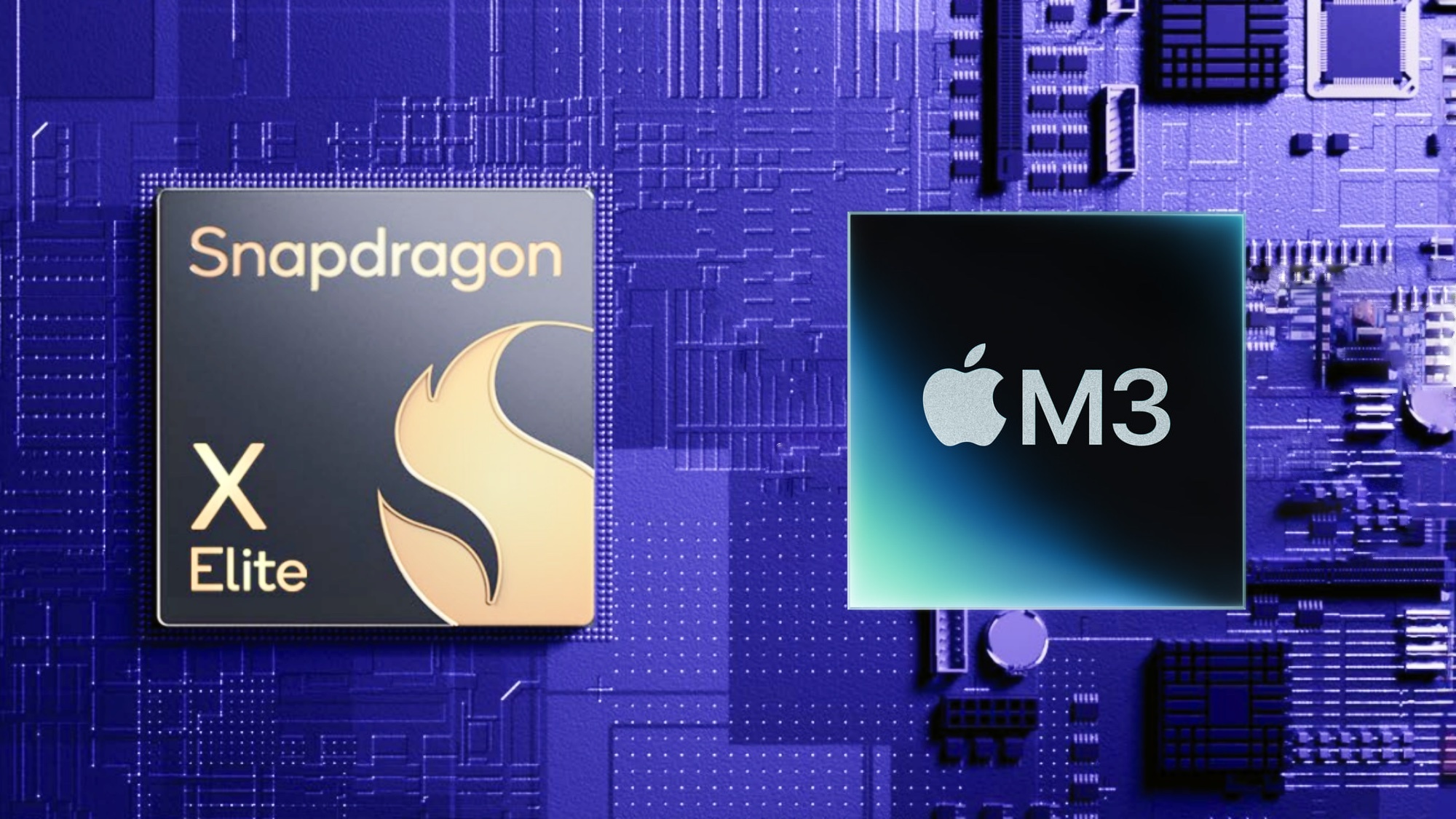
So far, we’ve heard about how fast the Snapdragon X Elite could be, but now we’re starting to see just how fast it is. In fact, it’s so fast, the M3 MacBook Air has been left in the dust.
According to internal testing seen by Tom’s Guide, the X Elite is 28% faster than the Apple M3 chip when put through the paces in Geekbench 6.2. This test is for CPU peak performance based on a geometric mean of multiple runs, using Qualcomm’s laptop reference design that we got the chance to put through its paces.
Oh Snap(dragon)!
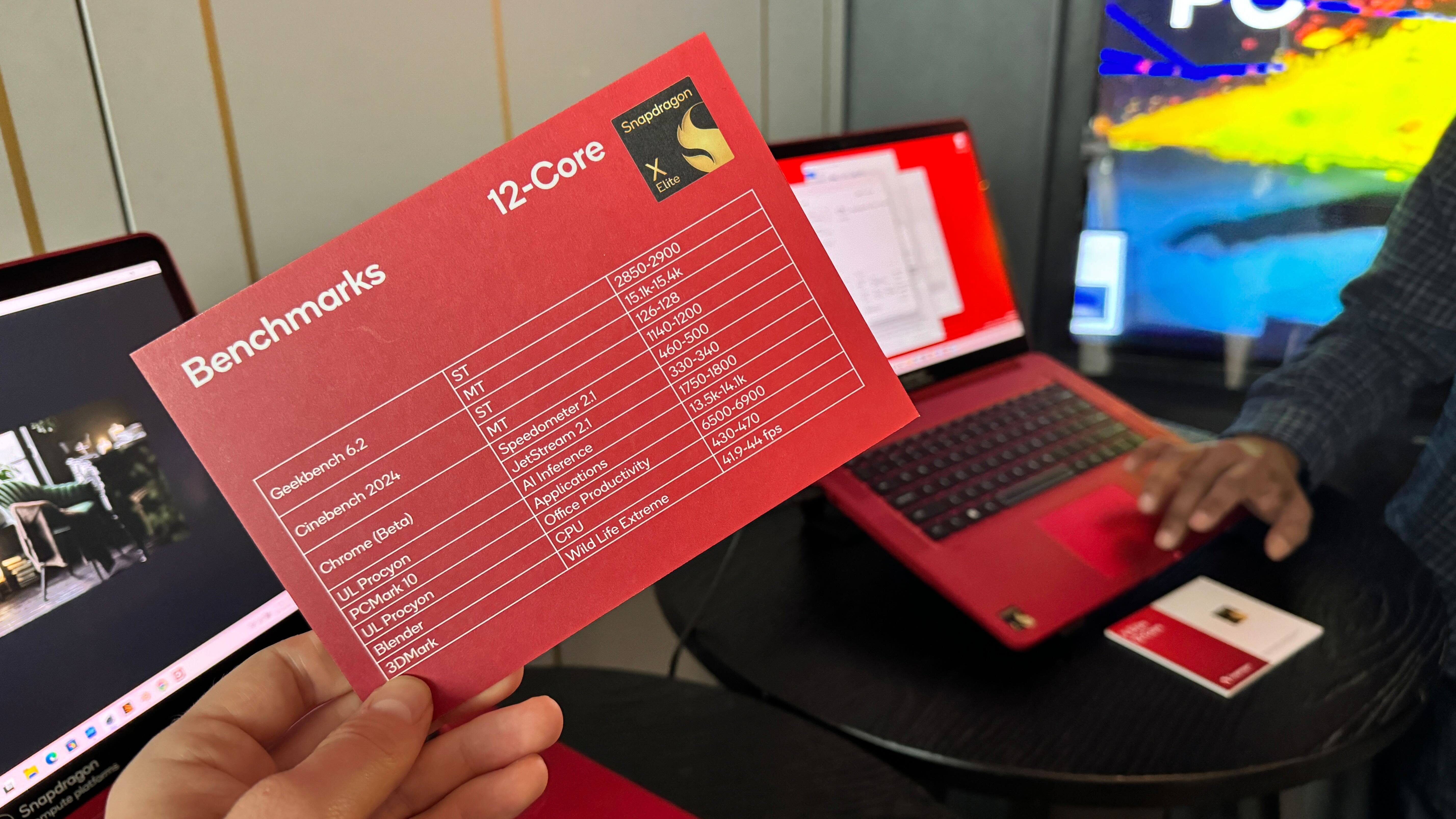
One of the more interesting parts of this silicon story has been that when Qualcomm did announce its new generation Arm chip for laptops, Apple just went ahead and announced the M3 MacBook Pro — consequently stealing the company’s thunder.
X Elite looks set to steal it right back, as internal testing shows the chip is faster. Qualcomm hasn't said anything about the battery life here, and I think that’s because there’s a chance the X Elite hasn’t quite matched the frankly bonkers stamina levels of Apple’s M-series chips.
However, given what we’re seeing in comparison to Intel machines, this is a big battery-fueled step in the right direction.
Snapdragon X Elite benchmarks: Our own testing
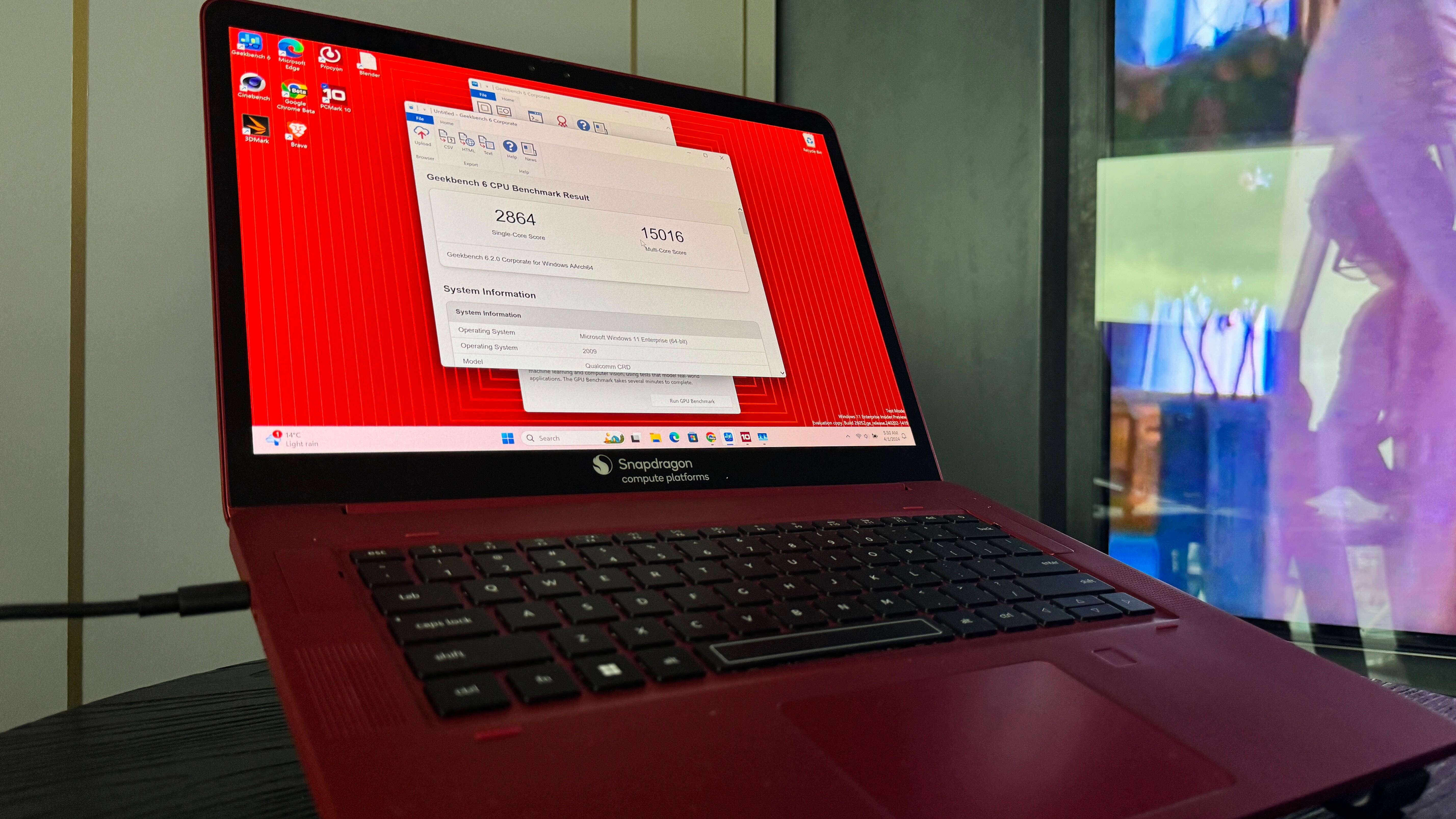
On top of that, we’ve put Snapdragon X Elite to the test ourselves with some benchmarks. Most fascinating is not just how it beats M3 in multicore results, but I think Qualcomm may be being a little modest here — given the fact it beats the M3 Pro MacBook Pro, too.
This shows a lot of multi-core promise for the X Elite, as it seems this will be more capable than not just Apple's lower and mid-tier chips, but also even Intel's most performant Core Ultra chipset in the 9 185H. For context, if anyone is a Blender fan, here are the results.
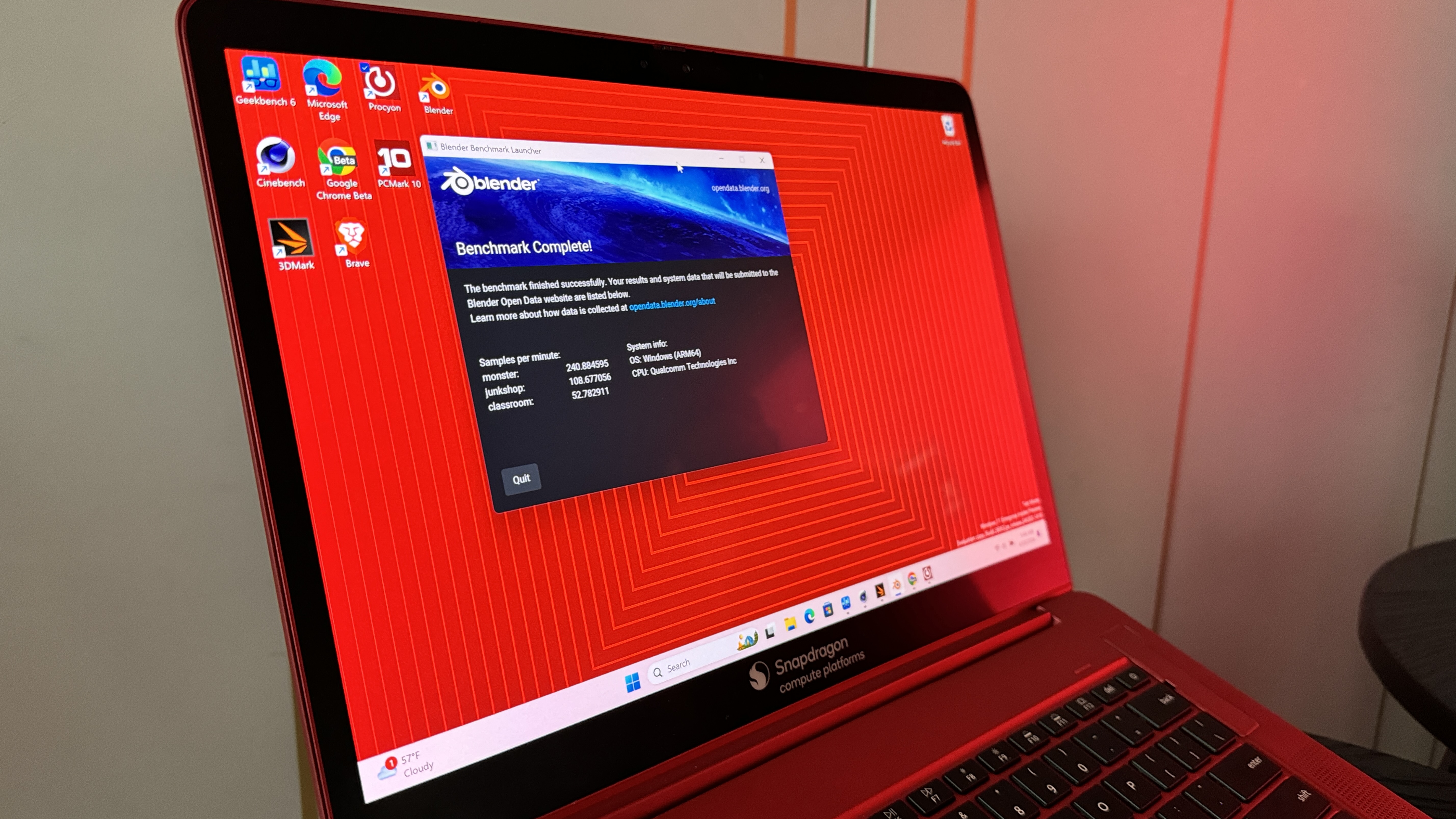
But two tests took my breath away. First, the use of OBS for game streaming gives you a key obstacle when it comes to accessibility. Whisper is a fascinating add-on that does live captioning. This is all done through AI transcription and processed entirely on the NPU.
Now, when you normally do this, one key thing you notice on Intel and AMD-based machines is the fans slowly start to kick up because of the somewhat intense request on the processors being made from OBS. For X Elite, however, thermal demands were nowhere near as bad in my time using this, and the speed of subtitling was impressive on the tiny amount of wattage this app was sipping.

And finally, the Windows app emulation layer. Microsoft seems so confident in Qualcomm's potential with this, that its claiming to be faster than Rosetta 2. You know what? After seeing Baldur's Gate 3 run through an emulation layer and even hit 40 FPS, I'm beginning to believe Redmond may be right.
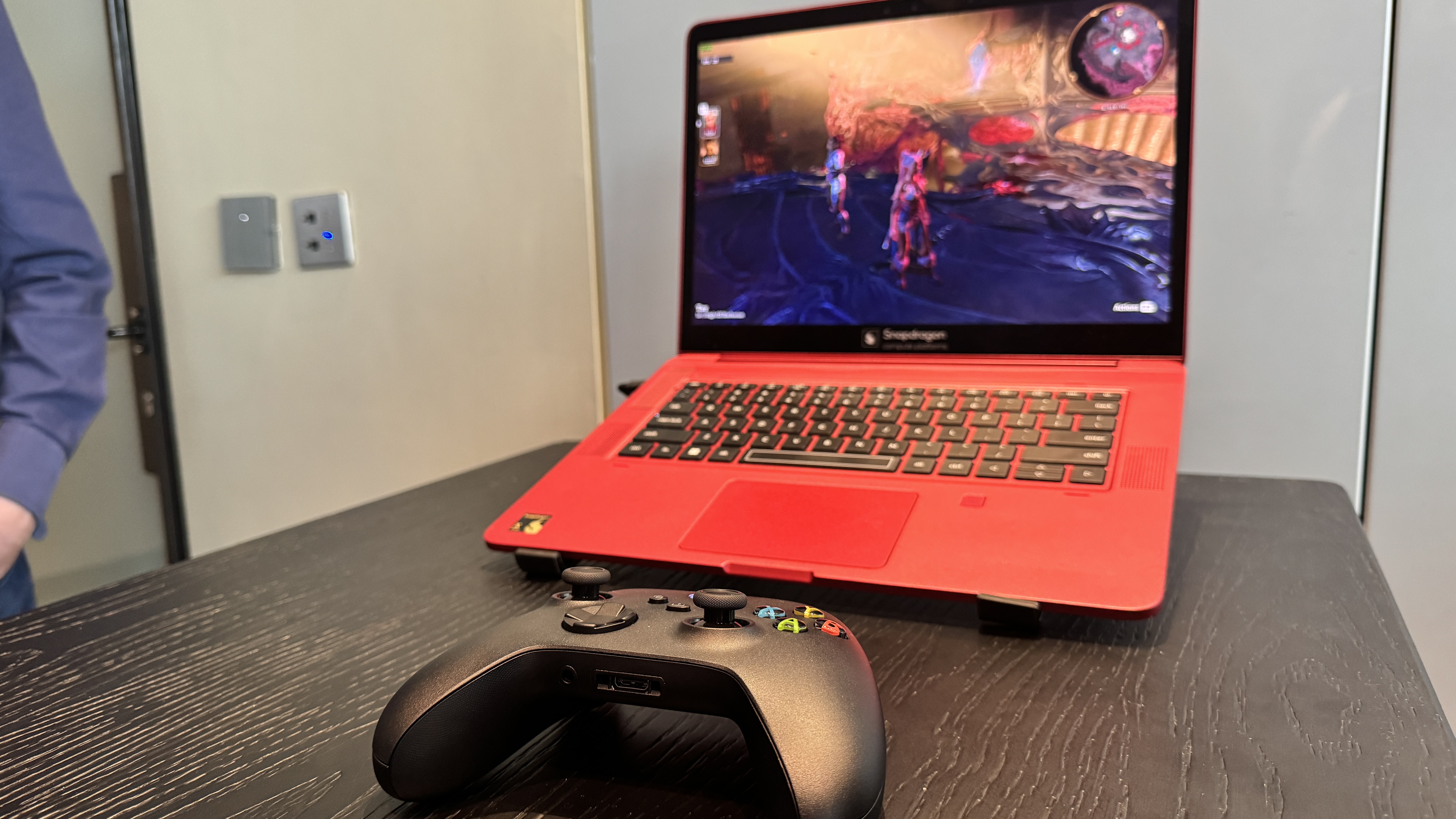
Hitting an average of 32 FPS in my own testing, and a Wild Life Extreme result of 6,155, the graphical prowess is not going to set the world on fire when compared to discrete GPU counterparts, but this is a seriously impressive score given the fact it is integrated.
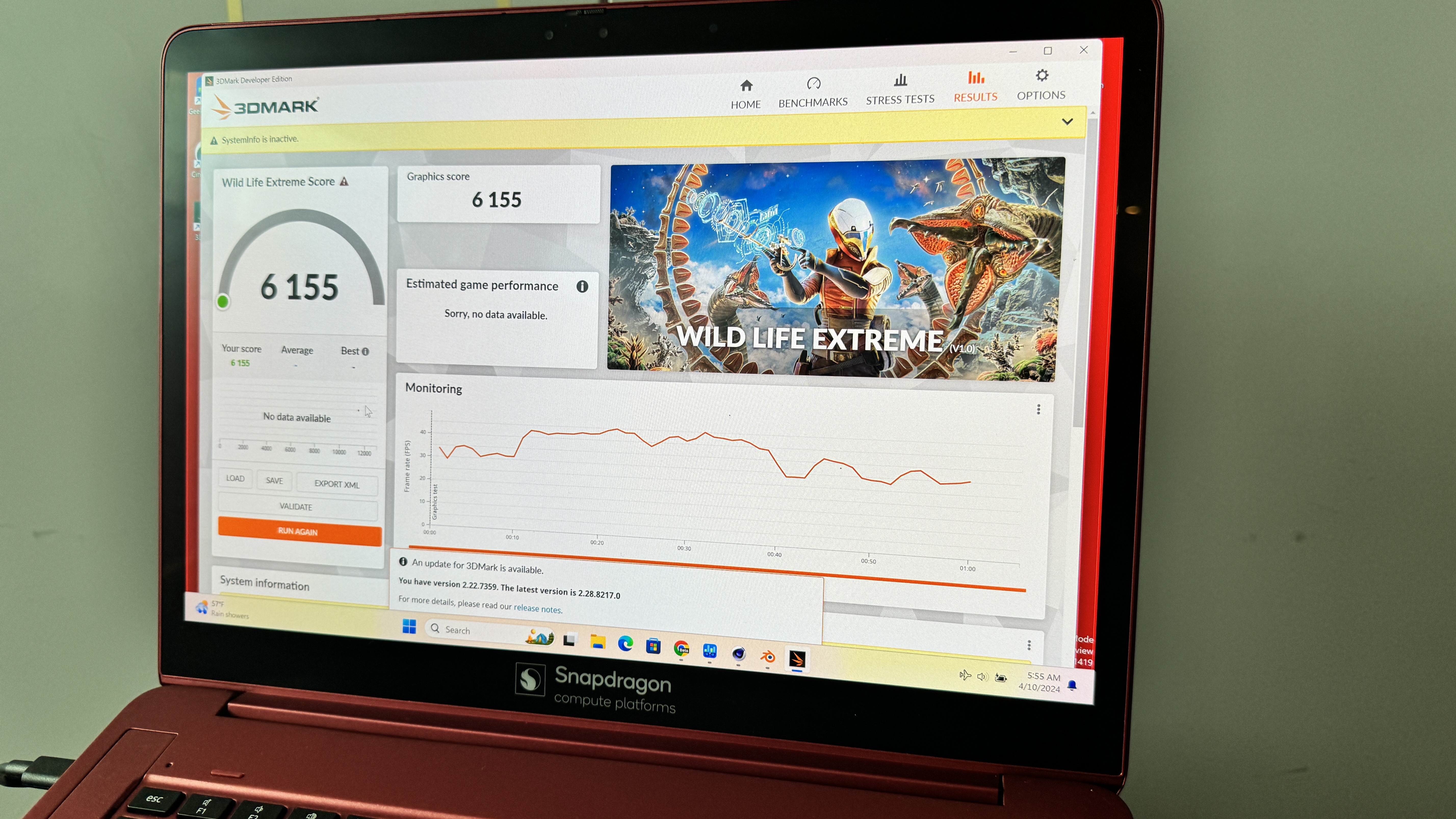
Yes, the plastic of the reference unit just above the keyboard did get warm and fans worked hard to dissipate it while gaming. Of course it's worth me saying this is just a reference design laptop, so other consumer-facing systems may be better (or worse) at this.
However, in my first real time testing the Snapdragon X Elite, I've got a sneaky feeling that Intel, AMD and even Apple should watch their backs. The company's coming in hot with serious multi-threaded performance.







